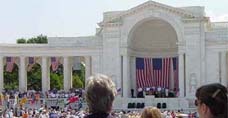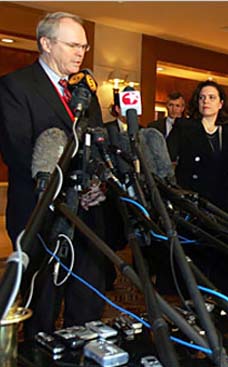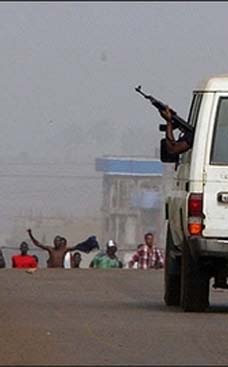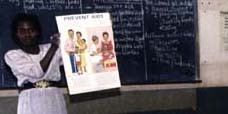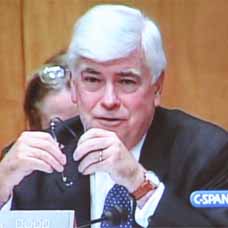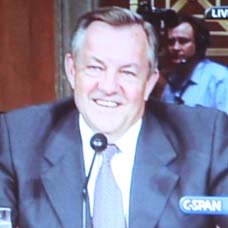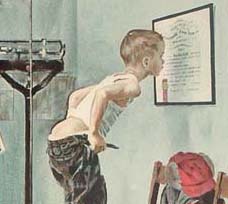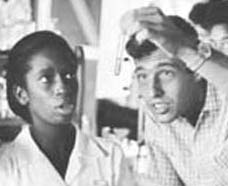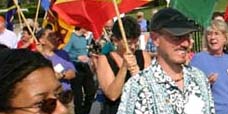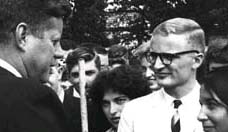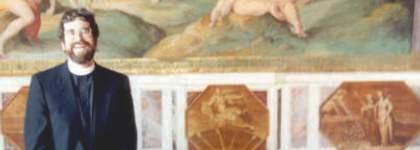
Consolmagno says many Catholics have been taught that Catholicism and science don't mix, though they always have. The Big Bang theory that the Earth originated in an extremely dense and hot space and expanded was developed by a Belgian priest. Though many people believe that Galileo was shunned by the Church for saying the sun was the center of the universe, he was close to many church leaders. Consolmagno said church officials don't advocate for a strict interpretation of the book of Genesis, which includes the Christian creation story. "The cosmology of Genesis is not only not the cosmology of the 21st century. It wasn't even the cosmology of the second century," he said. "The Romans knew that the world looked different from a flat plane with a bowl over it and water above and below. And that didn't seem to bother them." The conflict between evolutionary science and creationism in the United States comes from the Protestant tradition, not the Catholic one, he said. "American Catholicism is in a Protestant culture," he said. "We borrow a lot of our attitudes, along with a lot of our hymns, and not always the best of either." Instead of being at odds with each other, God's universe and physical reality are one, he said. He often is asked if the Church will meet its downfall if intelligent life is found on another planet. Consolmagno argues that such a discovery would only heighten the mystery of the Catholic God. "It will help us remember that we're not as clever as we thought we were," he said. For the past 13 years, Kenya RPCV Guy Consolmagno has held one of the most secure and prestigious posts in the planetary sciences, as one of the Pope's 12 personal astronomers, dividing his time between the Vatican's observatory at the papal summer palace at Castel Gandolfo in Italy and a giant telescope in Tucson, Arizona.
Now, as a Vatican astronomer, Kenya RPCV Guy Consolmagno spends much of his time talking to fellow astronomers, nonscientists, clergy, kids and skeptics about how science and faith, despite public perception, coexist
Vatican astronomer blends faith, science
By Chelsea Conaboy
Monitor staff
March 03. 2007 8:00AM
As a student and budding scientist at the Massachusetts Institute of Technology, Brother Guy Consolmagno used to wake up on Tuesday mornings excited to start his day. He was eager for a class on meteorites.
"You're touching bits of outer space," Consolmagno, now 54, said in an interview yesterday, holding out his hand as if his empty palm was filled with a rock propelled from the heavens. "It's as good, sometimes better, than moon rocks."
The self-professed nerd would go on to combine his love for the physical world with a passion for the spiritual one. Now, as a Vatican astronomer, Consolmagno spends much of his time talking to fellow astronomers, nonscientists, clergy, kids and skeptics about how science and faith, despite public perception, coexist.
Consolmagno was originally scheduled to give just one speech last night at the Christa McAuliffe Planetarium as part of the New Hampshire Humanities Council's newest book and speech series, Speculate. When the reservations list filled up immediately and calls
kept coming in, the planetarium scheduled Consolmagno for a second event and decided to broadcast his talk into a conference room.
Consolmagno said he's used to drawing crowds. People are fascinated with life in the Vatican, he said. But his talks are equal parts astronomy and theology.
"Science is a way of praising God," he said in an interview yesterday afternoon.
Consolmagno grew up in Detroit. He attended MIT for undergraduate and graduate degrees and pursued a doctorate in planetary science at the University of Arizona. He later returned to Boston for lecturer positions at Harvard College Observatory and MIT.
At age 30, he was enjoying the science but was looking for more. In 1983, he left for Kenya and two years in the Peace Corps teaching astronomy to high-school and university students. He joined the Jesuit order in 1989 and took his vows as a brother two years later. Soon after, he received orders to join the 15-astronomer staff of the Vatican observatory in Castel Gandolfo, at the pope's palace.
When he because a priest, Consolmagno said, he worried that scientists he'd worked with for 15 years would consider him differently with the collar on. Instead, he found that they opened up about their own faith.
"By me being a Jesuit, I've given them permission to talk out loud about their religious beliefs," he said.
As the Vatican's curator of meteorites, Consolmagno sends meteorites where requested for exhibits or experiments. The crown jewel, he said, is a fist-sized meteorite that landed on and killed a dog in Nakhla, Egypt, in 1911. It was once a part of Mars. He also conducts his own research, has traversed Antarctica collecting meteorites and takes daily walks in the palace gardens.
Through May, he is serving as a lecturer at Fordham University, a Jesuit school in New York, and holding a year-long chairmanship of the Division for Planetary Science for the American Astronomical Society.
Consolmagno said every physical scientist starts with three inherently "religious assumptions": The universe exists and is not a figment of the imagination. The universe is dictated by discoverable rules. And discovering those rules is something that's worth doing.
That third tenant is tied to intuition. When a scientist, even without data, pursues a hypothesis based on intuition, he blends faith and science.
"You say, 'That is so elegant that I'm willing to bet two years of my life following this up,' " he said. "That is something that comes from the soul. That's not something that a computer can work out."
The second tenant may be a statement of fact today. But hundreds of years ago, the basic laws of science had not yet been discovered.
"It's interesting to note that those people, the first scientists, were all monks, they were all clerics," he said. "And their sense that the universe makes sense came from, first of all, their belief that God created the universe in a logical way."
Consolmagno said many Catholics have been taught that Catholicism and science don't mix, though they always have. The Big Bang theory that the Earth originated in an extremely dense and hot space and expanded was developed by a Belgian priest. Though many people believe that Galileo was shunned by the Church for saying the sun was the center of the universe, he was close to many church leaders. Consolmagno said church officials don't advocate for a strict interpretation of the book of Genesis, which includes the Christian creation story.
"The cosmology of Genesis is not only not the cosmology of the 21st century. It wasn't even the cosmology of the second century," he said. "The Romans knew that the world looked different from a flat plane with a bowl over it and water above and below. And that didn't seem to bother them."
The conflict between evolutionary science and creationism in the United States comes from the Protestant tradition, not the Catholic one, he said.
"American Catholicism is in a Protestant culture," he said. "We borrow a lot of our attitudes, along with a lot of our hymns, and not always the best of either."
Instead of being at odds with each other, God's universe and physical reality are one, he said. He often is asked if the Church will meet its downfall if intelligent life is found on another planet. Consolmagno argues that such a discovery would only heighten the mystery of the Catholic God.
"It will help us remember that we're not as clever as we thought we were," he said.
For Consolmagno, discovering how that universe works and what it looks like is like playing a game of cards with God. Each hand that Consolmagno wins, each time he learns something new about the universe, he learns something new about how God works.
"The Heavens proclaim the greatness of God," he said. "That's why we study the heavens."
------ End of article
By CHELSEA CONABOY
